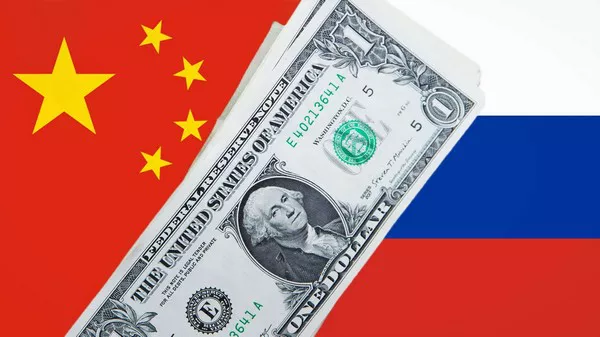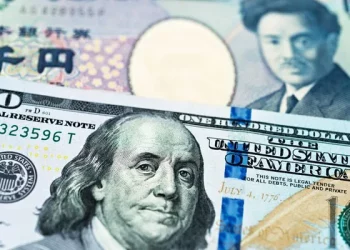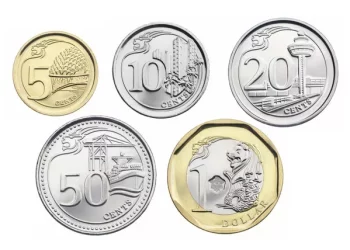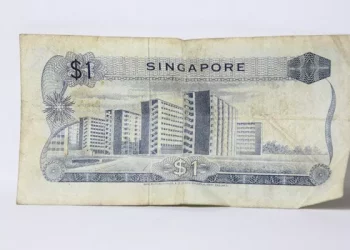The exchange rate between the US Dollar (USD) and the Mexican Peso (MXN) is a crucial point of interest for both individuals and businesses involved in cross-border transactions. Whether you are planning a vacation to Mexico, engaging in business dealings, or simply curious about how these two currencies interact in the global financial market, understanding the conversion of $200 USD to Mexican Pesos can provide valuable insight into the broader dynamics of the foreign exchange (forex) market. This article will explore the factors influencing the exchange rate, current market trends, and the conversion of $200 USD to Mexican Pesos.
Understanding the USD to MXN Exchange Rate
To begin, it’s important to recognize that the exchange rate between the USD and the Mexican Peso fluctuates based on various economic, political, and market factors. The USD/MXN exchange rate indicates how many Mexican Pesos are equivalent to one US Dollar. For instance, if the exchange rate is 18.50, this means that 1 USD is equal to 18.50 MXN.
The forex market, where currencies are traded, is highly liquid and affected by supply and demand dynamics. This market is the largest in the world, with trillions of dollars being traded daily. Understanding how these fluctuations work is essential for anyone engaged in currency conversion or forex trading.
Factors Affecting the USD to MXN Exchange Rate
Several key factors impact the exchange rate between the US Dollar and the Mexican Peso. These factors range from economic data releases and geopolitical events to market sentiment and government policies. Below are some of the most significant influences on the USD to MXN rate:
Economic Indicators and Data Releases: Economic reports such as GDP growth, inflation rates, employment data, and consumer confidence indices play a significant role in determining the strength of a currency. When the United States releases strong economic data, such as low unemployment or robust GDP growth, the US Dollar often appreciates relative to other currencies, including the Mexican Peso.
On the other hand, if Mexico’s economic indicators show strength, the Peso may strengthen against the USD. For example, an increase in Mexico’s industrial output or a drop in inflation may result in a stronger Peso.
Interest Rates and Monetary Policy: Central banks, such as the Federal Reserve (Fed) in the US and the Bank of Mexico (Banxico), control interest rates, which directly impact currency value. When the Fed raises interest rates, it tends to make the US Dollar more attractive to investors, which can lead to a stronger USD and a weaker Peso.
Similarly, Banxico’s monetary policies, including changes to Mexico’s interest rates, can have a significant effect on the value of the Mexican Peso. For example, if Banxico lowers interest rates to stimulate growth, the Peso could depreciate relative to the US Dollar.
Geopolitical Events: Political instability, trade wars, and changes in government policies can cause volatility in the forex market. The US-Mexico trade relationship is especially crucial for the value of the Peso, as Mexico is a major trading partner of the United States. Any developments that affect trade agreements, such as the United States-Mexico-Canada Agreement (USMCA), could lead to fluctuations in the USD to MXN exchange rate.
Furthermore, global political events, such as the outcome of US presidential elections or Mexico’s internal political stability, can cause changes in market sentiment, which in turn affects currency values.
Global Oil Prices: Mexico is a significant exporter of oil, and its economy is sensitive to changes in global oil prices. When oil prices rise, Mexico’s economy benefits, which can strengthen the Peso. Conversely, when oil prices fall, the Peso often weakens because Mexico’s oil exports become less valuable. The USD, being the world’s reserve currency, often remains stable even when oil prices fluctuate, giving the US Dollar an advantage.
Market Sentiment and Speculation: Forex markets are heavily influenced by traders’ sentiment and speculative actions. If traders believe that the US Dollar will strengthen against the Mexican Peso due to expected economic growth or favorable policies in the US, they may buy USD, driving up its value. Similarly, if there is fear of economic downturns in the US or political instability in Mexico, traders may sell USD in favor of safer assets, which can lead to a decline in the Dollar’s value relative to the Peso.
Natural Disasters and Global Events: Natural disasters or global health crises, like the COVID-19 pandemic, can have a profound impact on the exchange rate between the USD and the MXN. These events can cause economic disruptions, affect investor confidence, and change the outlook for both the US and Mexican economies. For example, the pandemic saw dramatic shifts in exchange rates as countries responded with fiscal stimulus packages and changes in interest rates.
Currency Conversion: $200 USD to Mexican Pesos
Now that we have established the factors that influence the exchange rate, let’s look at the practical aspect of converting $200 USD into Mexican Pesos. The current exchange rate plays a crucial role in this conversion. It’s important to note that the exchange rate you receive from banks, currency exchanges, or at an ATM may differ slightly from the market rate, as these institutions apply a margin or fee for their services.
Assuming an exchange rate of 1 USD = 18.50 MXN, the conversion of $200 USD into Mexican Pesos would be calculated as follows:
200USD×18.50MXN/USD=3,700MXN
Thus, $200 USD would be equivalent to 3,700 Mexican Pesos at an exchange rate of 18.50. However, the actual amount you receive in Pesos may be slightly different, depending on transaction fees and the service provider’s exchange rate.
How to Obtain the Best Exchange Rate
To get the most value for your $200 USD when converting to Mexican Pesos, there are a few strategies you can employ:
Use Online Currency Converters: There are various online tools and mobile apps that allow you to monitor real-time exchange rates between the USD and MXN. These tools can help you find the best time to exchange your money or compare different providers.
Avoid Airport Currency Exchange: Currency exchange services at airports tend to offer less favorable exchange rates, as they cater to travelers and charge higher fees for the convenience. To avoid losing out on value, it is better to exchange your money at local banks or currency exchange offices in urban centers.
Use ATMs: Using ATMs in Mexico can often provide competitive exchange rates, but be sure to check with your bank regarding any international transaction fees. Some banks also offer cards with zero foreign transaction fees, which can be useful for travelers.
Compare Rates at Different Banks and Exchanges: If you have the time and the need to convert a large amount of money, it is advisable to shop around and compare rates offered by various banks, currency exchange services, and online platforms.
Consider Currency Hedging: If you are an international business or investor dealing with USD and MXN on a regular basis, it may be beneficial to engage in currency hedging. Hedging can help protect you from unfavorable exchange rate fluctuations. This is especially relevant for businesses with recurring payments or revenues in USD and MXN.
The Current Market Sentiment: Trends in USD to MXN Exchange Rate
As of early 2025, the USD to MXN exchange rate has seen some volatility, influenced by global economic conditions, interest rate changes by the Federal Reserve, and Mexico’s economic recovery post-pandemic. The exchange rate fluctuates in response to news related to inflation, employment data, and the broader global economic landscape.
In general, the US Dollar has been relatively strong due to the ongoing recovery of the US economy and tighter monetary policy by the Federal Reserve. Meanwhile, the Mexican Peso has experienced periods of appreciation, driven by factors such as strong remittances from the US, rising oil prices, and improvements in Mexico’s trade balance.
For individuals looking to convert $200 USD to Mexican Pesos, keeping an eye on these trends can provide valuable insights into the best times to exchange currency.
Conclusion
Understanding the process of converting $200 USD to Mexican Pesos goes beyond a simple mathematical calculation. The exchange rate between the two currencies is affected by a variety of factors, including economic data, interest rates, geopolitical events, and market sentiment. By staying informed about these factors, individuals and businesses can make smarter decisions about when and how to exchange currencies.
While exchange rates fluctuate, adopting strategies to secure the best rates and managing the impact of fees can maximize the value of your money. Whether you are a traveler, an investor, or a business dealing with cross-border transactions, understanding the dynamics of the USD to MXN exchange rate is crucial for making informed financial decisions.
For those engaging in forex trading, monitoring market trends and understanding the key drivers of currency movements can help mitigate risks and capitalize on profitable opportunities. With this knowledge, converting $200 USD to Mexican Pesos becomes a more strategic and informed process.
Related Topics:




























